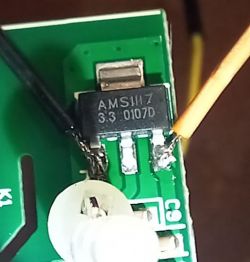The journey continues with the next 7 switches. I'm stubbornly trying to figure out how to flash them without desoldering, to save time. With the shorter wiring, I'm getting a tiny bit further than before. When I press the CEN button, it immediately says "Getting bus success!", but then hangs at "Reading 0x00". (Exactly the same if I do a power cycle.) When I check with my oscilloscope, I can see that the chip is replying with some data, and then goes silent. My oscilloscope is not good enough to allow me to check what is actually being sent/received both ways.
Is there a way in software to monitor what is being sent/received as text?
If not, I could buy two more USB-UART devices and connect one RX line of each to the TX-RX and RX-TX lines of the programming setup, just to monitor what is going both ways.
Added after 17 [minutes]:
I can create an intercepted UART using this command from https://unix.stackexchange.com/a/225904/28063
socat /dev/ttyUSB0,raw,echo=0 SYSTEM:'tee in.txt | socat - "PTY,link=/tmp/ttyV0,raw,echo=0,waitslave" | tee out.txt'and then monitor it with
tail -f in.txttail -f in.txtBut I can't set the flasher to use /tmp/ttyV0.







